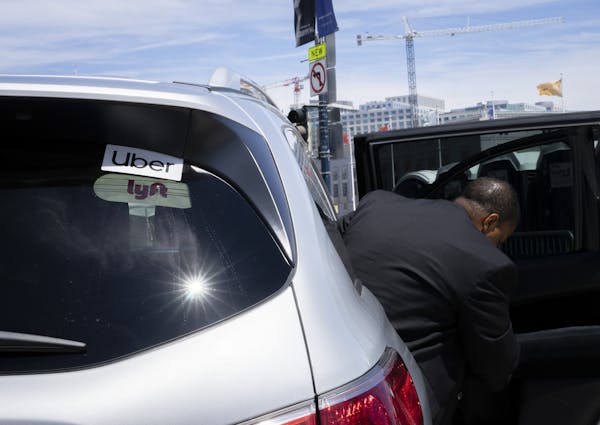There was a time many years ago when the western end of the Gateway State Trail abutted Cayuga Street in St. Paul, a few blocks from the State Capitol. For bike riders who approached the trail from the west, this was the beginning of the 18-mile northeasterly ride. Right there, across the street, sat a parking lot, in case anyone wanted to drive to the trail for an extended ride out toward Stillwater, or to just unload bikes to air out the kids.
The trailhead, as is customary, had a sign that actually said "Gateway State Trail" and, if the first few miles were heavy on industrial loading docks and vacant lots, at least you knew you were on the right trail, headed mainly northeast for a bucolic ride on the old Soo Line Railroad corridor toward Washington County.
That all ended in 2014 when the state Department of Transportation (MnDOT) — an agency a bit on the car-centric side of public policy development — began to rebuild and expand the adjacent Interstate 35E. The parking lot and trailhead disappeared, as did the Gateway's bridge over the interstate. So for years anyone riding from the west had to play an annoying "Find the Gateway" game, exploring city streets, such as busy Maryland Avenue, to link up with the trail.
It appears that the cycling public — as well as the walking and rollerblading public — should get used to a diminished gateway to the Gateway. MnDOT did not rebuild the bridge over the highway and, according to the Department of Natural Resources, which manages state trails, the parking lot and even the trailhead itself aren't coming back either.
The DNR's project manager for state trail work, Kent Skaar, said recently that "it is a little strange" that one of the state's busiest trails has a vague, find-it-if-you-can route through St. Paul. (Try the northwest corner of the intersection of Cayuga and L'Orient Street, next to the I-35E on-ramps.)
The Gateway is simply an example of the DNR's management problem — it has lots more trail miles (650) than it has money to maintain and improve them. It is a reality of government budgets that could be overcome only if bicycle infrastructure could somehow be linked politically to the national defense and security of the borders.
Short of that, the DNR funds work where it can. This spring, that work includes a new tunnel that will take the Gateway under a rebuilt Hadley Avenue in Oakdale, thus removing an awkward road crossing with heavy traffic. This is happening because the DNR's $1 million is being stretched by $12 million in federal and other state money that is paying for the larger project.
The real fun, in the state trail department, comes this spring when the Legislature decides the annual distribution of the state's Environment and Natural Resources Trust Fund. The DNR requested $8.7 million for trail projects statewide for bridge-building, small reconstruction projects and engineering design.
The Gateway is on the list (eliminating a trail crossing of L'Orient in St. Paul), as well as the Paul Bunyan (a half-mile in Bemidji); the Heartland (a mile near Walker); the Gitchi-Gami (twice, once for engineering work north from Silver Bay, and second for construction that will connect Lutsen to Tofte and Schroeder); Blazing Star (connecting Albert Lea and Hayward); Minnesota Valley (a half-mile within Fort Snelling); and replacing or repairing five to seven unnamed bridges. Those are the requests anyway.
Want more? The DNR should just tell the federal government it wants to build some walls.
Bike note
In the Department of Our Emerging Crazy Quilt of Commuting, we have this report in February from the University of Kentucky, as published in the journal Mass Transit. Researchers found that for every 1,000 bike-share bicycles on or near a bus route in New York City, bus ridership on that route fell between 1.7 and 2.4 percent. The study theorized that the average length of bus and bike trips are about the same, and people are opting for the convenience and pleasure of the bikes.
The study also noted, from a survey of 22 unnamed public transit systems, that bike-share programs demonstrably increase light rail ridership by 4.2 percent.
All of which suggests — what's that they say in the transit business? — that we are becoming wildly multimodal. We are hopping between personal bikes and shared bikes and e-bikes and hoverboards and buses and scooters and light rail and … walking.
So, are shared bikes drawing riders away from buses in the Twin Cities? Are they creating a bump in light-rail rides? Do scooters matter yet? What are the policy ramifications and opportunities as options increase? These questions were put to Metro Transit three times over the last 10 days, and the agency chose not to respond.
Tony Brown is a freelance writer from Minneapolis. His Bike Guy column appears two times per month. Reach him at mplsbikeguy@gmail.com. Find archived columns online at startribune.com/bikeguy.
Maya Moore and Seimone Augustus headline Women's Basketball Hall of Fame induction ceremony
LeBron scores 30, and the Lakers avoid 1st-round elimination with a 119-108 win over champion Denver
Wyatt Johnston scores in OT, Stars beat Golden Knights 3-2 to cut series deficit to 2-1

